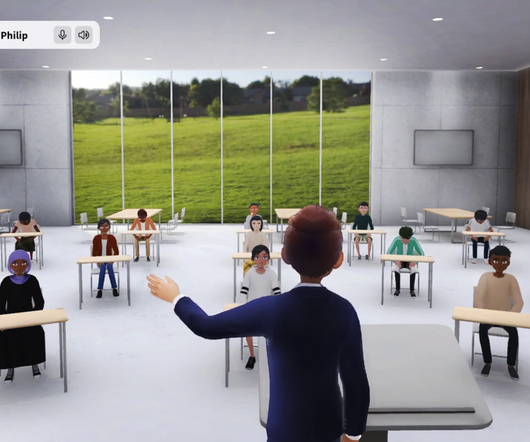6 Benefits of Immersive Learning with the Metaverse
ViewSonic Education
FEBRUARY 20, 2023
What’s more, the metaverse itself can be accessed using a variety of devices. With that being said, metaverse learning is a relatively new concept and one that many educators are still getting to grips with. This is the basis of immersive learning as a concept. For instance, imagine a class trip to study mountain ranges.
















Let's personalize your content